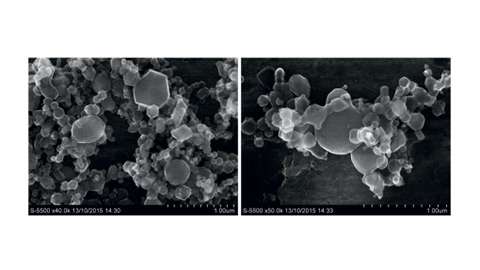Scientists introduce new material to store hydrogen

Scientists of Siberian Federal University and the Institute of Physics of the SB RAS produced a new material for hydrogen storage. The material is based on magnesium hydride, and can store hydrogen mass of about 7 percent of its own weight, and this is a record capacity among other similar materials. The material could be useful for building hydrogen fuel vehicles.
Hydrogen is one of the most promising options for replacing gasoline, gas and other fuels based on hydrocarbons. Most promising is its use as a fuel for electric vehicles. However, transportation of hydrogen is quite difficult. Firstly, it requires heavy, expensive cylinders. Secondly, it is not safe, since the mixture of air and hydrogen is very explosive. Therefore, during transportation, hydrogen must be carefully stored in hydrogen accumulators.
"The most safe and effective solution now is hydride-forming metals that absorb hydrogen. Magnesium is the most promising of these metals. Many scientists around the world are developing hydrogen accumulators based on magnesium hydride", says Professor Grigoriy Churilov, one of the authors of the work, Professor of SibFU.
Theoretically, magnesium can absorb hydrogen up to 7.6 percent of its own mass. However, in most current experimental work, the capacity of magnesium hydride does not exceed 5 to 6 percent. The Krasnoyarsk scientists have improved this index. By adding nickel and palladium to the magnesium hydride, they obtained a material accumulating about 7 percent hydrogen. The paper by the scientists is published in the last issue of the SibFU journal Mathematics and Physics.
More information: Nanodispersed Mg-based Powders Received in a Hydrogen-argon Plasma Flow and Estimation of their Application Prospects as Hydrogen Storage Materials, Journal of Siberian Federal University. Mathematics & Physics (2017). DOI: 10.17516/1997-1397-2017-10-1-75-82
Provided by Siberian Federal University




















